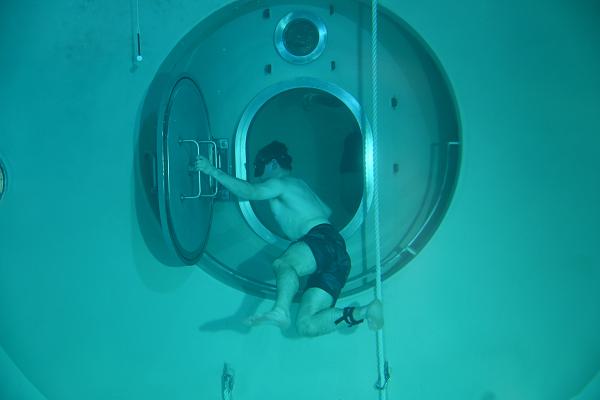
Groton, Connecticut. (May 13, 2025): It is a submariner’s worst nightmare, finding themselves trapped in a stricken submarine hundreds of feet below the waves and the air is running out. To allay these fears, the U.S. Navy has established the Basic Enlisted Submarine School to teach Sailors how to escape in such situations. In this photo by Seaman Duncan Woodard, a student enters the school's pressurized submarine escape trainer. The trainer teaches Sailors how to escape from a submarine that is unable to surface and then survive on the surface until help arrives. The school is an eight-week introduction to the basic theory, construction, and operation of nuclear-powered submarines with courses on shipboard organization, submarine safety, and escape procedures.
The curriculum focusses on three critical areas: firefighting, damage control, and how to escape from a submarine.
Fire is an even greater threat to Sailors under the waves than those on the surface. Students learn the differences between battling fires in a submarine and the special equipment made for that purpose. Another threat is leaks or loss of pressure from a damaged hull. Students practice patching leaks and sealing ruptured pipes before their compartment completely floods.
Finally, submariners are taught how to successfully escape from a disabled submarine in forty feet of water via a realistic trainer. It simulates the conditions of a submarine escape, allowing sailors to practice using proper equipment and techniques in a safe, controlled environment. A trainer consists of a deep tank filled with water, with at least one underwater entrance at depth, simulating an air lock in a submarine. The tank is pressurized to match the pressure inside the simulated escape trunk. Trainees enter the escape trunk, equalize pressure, and then exit into the water, simulating the escape process.
The key to surviving such scenarios is Submarine Escape Immersion Equipment (SEIE), that includes wearing a protective suit, operating its features, and safely exiting the escape trunk to reach the surface. The suit allows survivors to escape depths down to six hundred feet at a rate of eight or more sailors per hour. The SEIE suits reduce the risk of decompression sickness, oxygen toxicity, carbon dioxide toxicity, and nitrogen narcosis.
Pressurized submarine escape training is crucial for submariners as it equips them with the skills and confidence to survive while building confidence and reducing anxiety associated with a real-life emergency.


